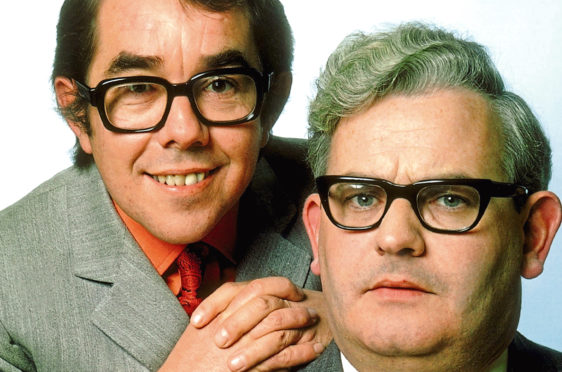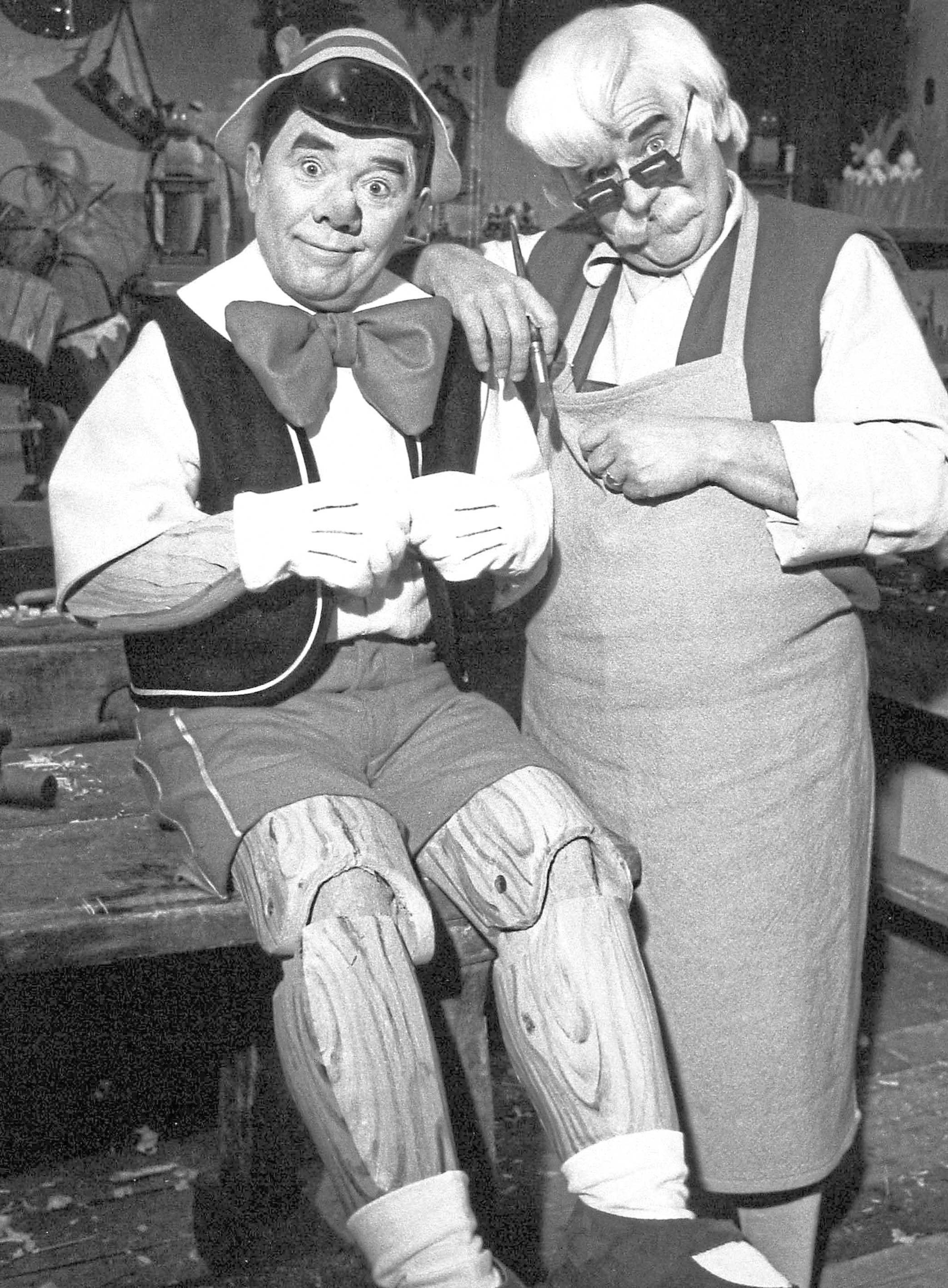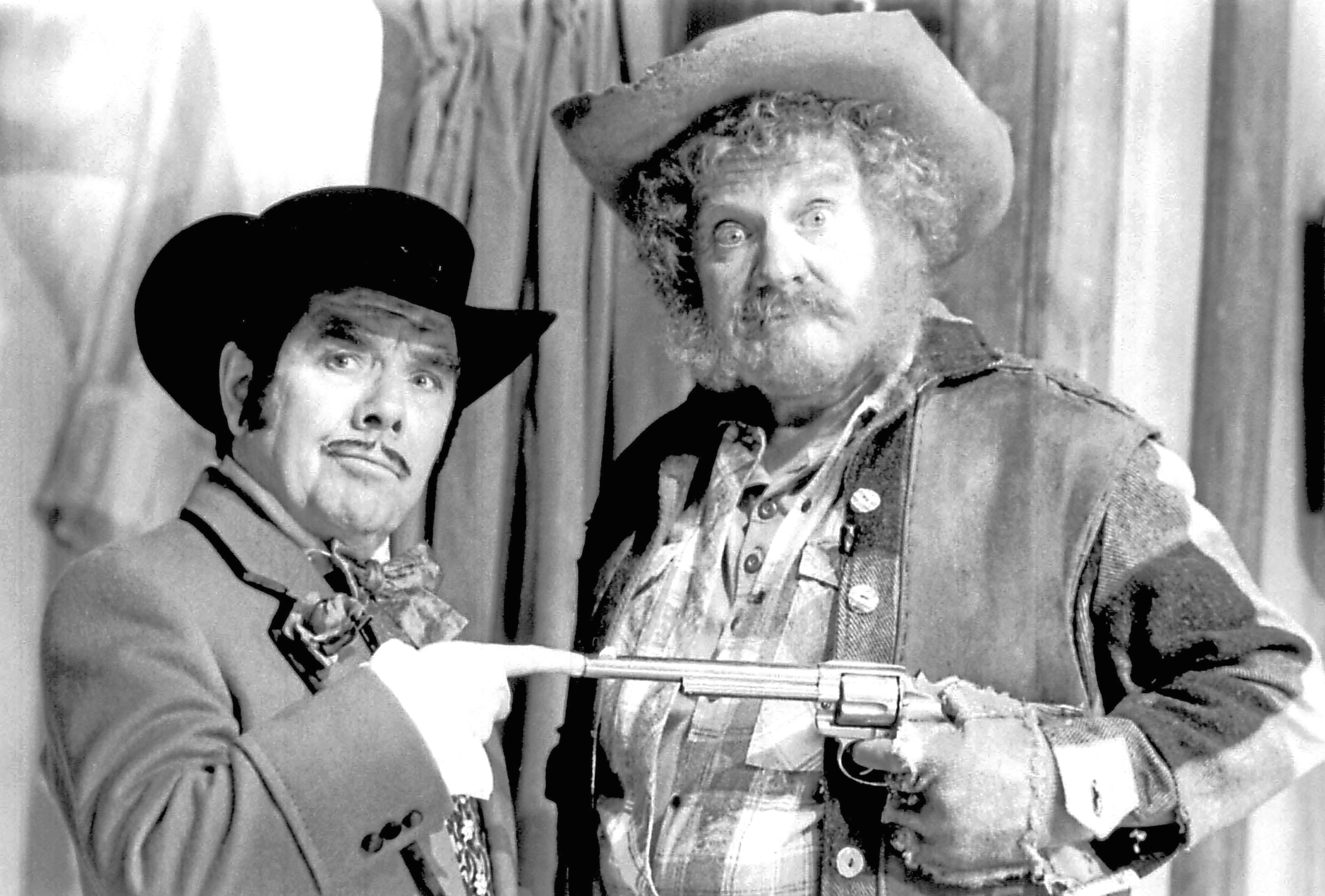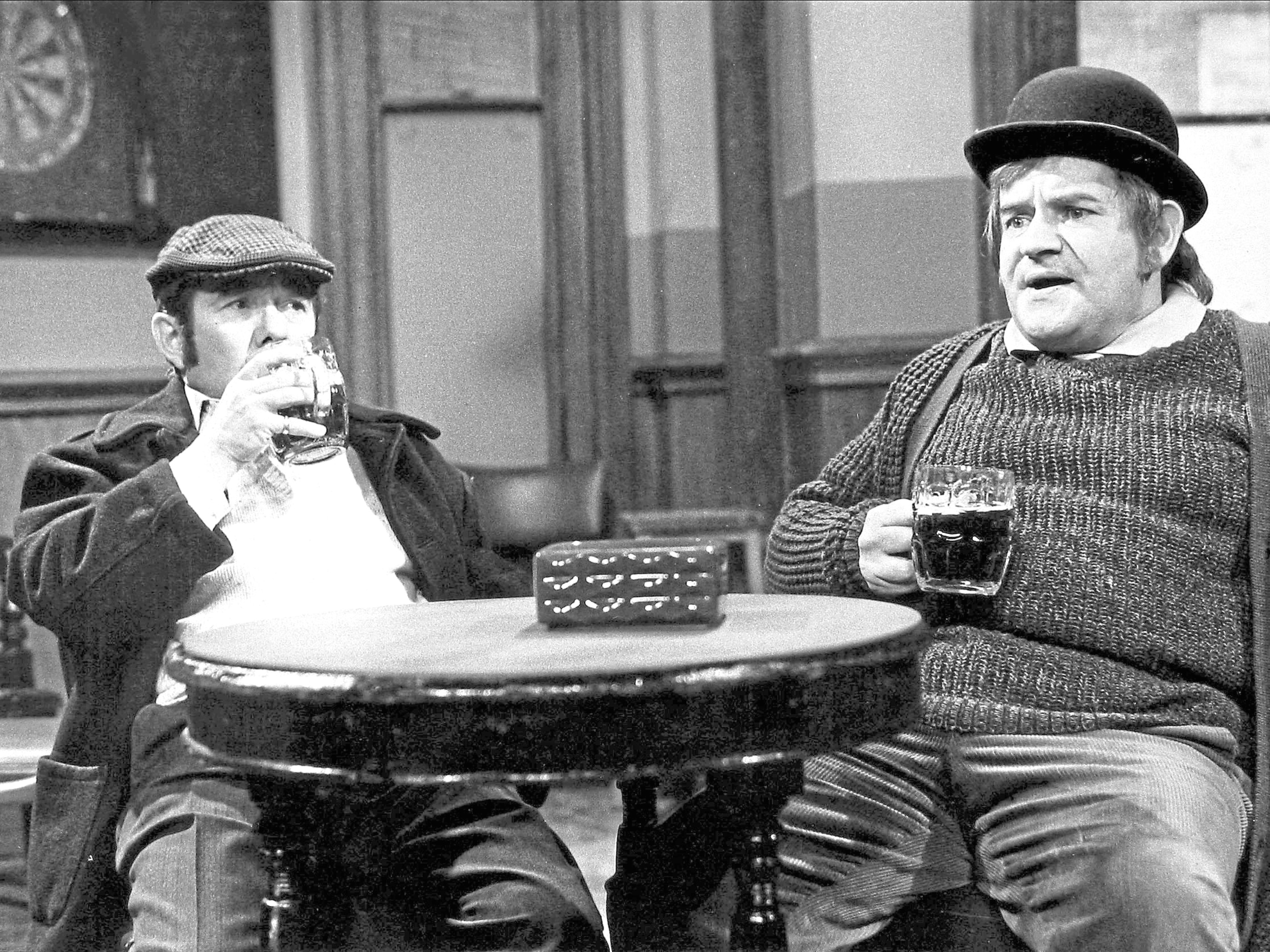
Nearly a quarter of the UK’s population watched the first episode of The Two Ronnies, transmitted at 8.15pm on Saturday April 10 1971.
Public opinion after the episode’s screening revealed most people regarded it as an entertaining show with the two performers forming a welcome combination.
One viewer told a BBC researcher that “either Ronnie is good, but together they’re absolutely marvellous”.
But it wasn’t just the public who enjoyed The Two Ronnies – it was respected by the industry, too. In 1975, the show won a Bafta for Best Light Entertainment Programme.
Every evergreen episode of The Two Ronnies followed a similar weekly schedule.
The working week began on Monday morning when many of the sketches selected for that week’s instalment were read. Any additional actors needed for the episode would be present, plus members of the production team.
Rehearsals began on Tuesdays. “We’d rehearse sketches up to four times and, invariably, alterations were made,” says Terry Hughes, who directed the series.
On Tuesday, the musical numbers – an integral part of the show – were rehearsed with Ronnie Hazlehurst, musical director, making notes for the orchestration.
The rest of the week involved more rehearsals, including in front of the cameras and within the sets for the first time on Saturday.
Sunday was recording day. After rehearsing in full costume during the afternoon, everyone took a dinner break before the studio audience arrived and proceedings got underway with a warm-up artist or, even, Ronnie Corbett introducing the show.
For Ronnie Barker, walking out in front of the audience and entertaining as himself was something he couldn’t cope with. But if he grabbed a pair of glasses, slapped a moustache or beard on and called himself John Smith, he would have been fine.
Once adopting the persona of a fictitious character, Ronnie B was in his element, able to entertain for hours.
Even for each episode’s closing scene where, sitting behind a desk alongside Ronnie Corbett, he said goodbye, Barker still couldn’t be himself.
The late David Nobbs once explained: “I was the script editor for the first series and had a decision to make about how to end the show. I suggested the two Ronnies simply said, ‘Goodnight’ nicely and sincerely. But Ronnie B said he couldn’t do that as himself, he wouldn’t appear as himself in the show.
“So the joke of using the ‘Goodnight from him’ comment was devised – that was his way of getting around the embarrassment of addressing the audience as himself. He was a shy, private man.”
Someone who wrote many sketches for the show was Michael Palin. Reflecting on the two Rons, he says: “They were very different in the way they performed and the characters they could play, but they complemented each other well.
“Both were supreme deliverers of a funny line. While Ronnie C had this engaging Scottishness about him, Ronnie B was always slightly cooler. He might be doing a character brilliantly, but it was almost like a piece of science he’d developed in the lab whereas Ronnie C was much more instinctive when delivering material.”
While Corbett was happy to work with scripts supplied by others and rarely got involved with the making of the series, Barker was the complete opposite.
A self-confessed perfectionist, he was involved with all aspects of the production and wrote an increasing amount of sketches. This didn’t always go down too well with the show’s other regular writers.
“There was a high rejection rate and I think this upset some writers because they started thinking Ronnie B’s material was favoured over other people’s,” admits Terry Hughes.
“I don’t think that was true, we chose the best available. We’d have been crazy to turn down something wonderful just to do a Ronnie Barker sketch – he wouldn’t have wanted that, either.”
Reggie Perrin writer David Nobbs, however, once explained to me: “Ronnie Barker, the actor, was great and we thought how wonderful he was, but Ronnie Barker, the writer, did slightly step on our toes.
“He wrote some brilliant sketches, including Four Candles, probably the most famous sketch they ever did. I admired his writing and none of us resented any of the really good sketches he wrote being used in the show.
“But as time went on, he wrote more and more and we felt it wasn’t a level playing field any more because he’d take an idea – and both Dick Vosburgh and I suffered this – and write more sketches, using the same premise.
“I wrote a sketch called ‘Pispronunciation’, a monologue about a bloke who couldn’t pronounce his ‘worms’ correctly. But Ronnie wrote at least two sequels to it, and he did this to Dick Vosburgh’s ‘Dr Spooner’ sketch, but we felt we owned the copyright.
“Therefore, the very good intention he had at the beginning, as expressed by him, that he didn’t want to take advantage of being Ronnie Barker, star of the show, changed.
“In the end, I felt he did take advantage of this fact, which we slightly resented.”
One of the consequences of this, says Nobbs, is that: “It meant others didn’t have so much of a chance getting material accepted as we once had. It wasn’t anything to fall out over, and I don’t know that he was aware that we felt he was doing anything wrong, but it was a slight irritation to us.”
When asked about the use of ideas dreamt up by other writers, Terry Hughes says: “I don’t think Ronnie even stopped to think about it, he thought, ‘We need some material, here’s an idea, I could take this and run it.’
“Not for a moment would it have been for financial gain, that was never part of his thinking.”
Although it could be argued that Barker’s increasing power and influence saw him claiming more and more control of the show, in terms of direction and content, it must be remembered that the two Rons were the stars – it was their reputations on the line when they performed the show each week.
After 16 years of entertaining millions, the curtain came down on The Two Ronnies with a Christmas Special in 1987.

The long-running programme had attracted a loyal audience and rightly earned its place in the annals of British TV as one of the best comedy series of all time.
Although never cutting edge in terms of comedic style, it was perfectly executed, subtly produced and contained some wonderful material from a host of top-drawer writers. But a degree of repetition was creeping in and as nothing lasts forever in the world of entertainment, it was time to call it a day.
Reflecting on the ending of an era, writer David Renwick says: “Towards the end, the comedy climate was slowly changing.
“Not The Nine O’Clock News had savaged them with their ‘Two Ninnies’ parody, which I know had deeply offended Ronnie B, and I’m not surprised. Personally, I found bits of it quite funny.
“The trouble was, Not The Nine O’Clock News was ‘hip’ and on the ascendant. And just as people like Mike Yarwood were now suffering next to Spitting Image, the Ronnies began to look dangerously old-fashioned.”
Ronnie Corbett admitted to me that they were both upset by the Not The Nine O’Clock sketch. “Ron was very upset. It seemed foolhardy of the BBC to let bright young things take the mickey out of the big Saturday night show. It seemed impertinent at the time and a bit daft to be hurt within your own territory.”
So on Christmas Day 1987, the two Rons marked the end of an era with their trademark lines, “It’s goodnight from me… and it’s goodnight from him.”
Richard is the author of Remembering Ronnie Barker, published by Century.

Enjoy the convenience of having The Sunday Post delivered as a digital ePaper straight to your smartphone, tablet or computer.
Subscribe for only £5.49 a month and enjoy all the benefits of the printed paper as a digital replica.
Subscribe
 © Allstar/BBC
© Allstar/BBC